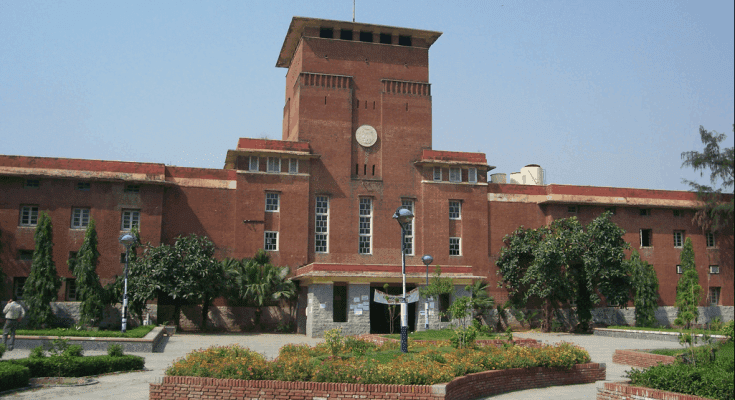When a 17 year old is convicted in one of the most horrifying gang rape cases or when a 19 year old goes on a shooting spree, killing 17 people in his school after getting expelled; we must ponder over how and why these youngsters have homicidal tendencies.
Jaques in Shakespeare’s ‘As You Like It’ beautifully explained the different stages of life, from infancy to death in the form of monologue. He associates the stage of youth with peart, passion and an innate push to build one’s reputation. That’s the beauty of being young – untouched by world’s pessimism and on the way to discover new horizons with ‘Carpe diem (seize the day)’ as the battle cry.
The foundation and progress of every state lies in the hands of its vigorous, vivacious youngsters, who are the torch bearers of the present and trustees of the future. They are crucial for national development as it is their toil and dynamic vision that runs the nation. It is observed that India has the relative advantage at present over other countries in terms of distribution of youth population. According to ‘World Population Prospects: The 2015 revision’ Population Database of United Nations Population Division, India has the world’s highest number of 10 to 24-year-olds, with 242 million—despite having a smaller population than China. As per predictions in 2017 by Ministry of Statistics and Programme Implementation, Government of India; India is expected to have 34.33% share of youth in total population by 2020. Thus, it is evident that India has been blessed with the most valuable human resource for fostering economic, cultural and political development, quite magnanimously. But with such a huge youth population, there comes the onus of making them constructive parts of society. And, the whopping rise in juvenile crimes brings out a dark side of our ‘developing and flourishing’ society.
In recent years, juvenile delinquency has emerged as a disturbing trend world over. Petty crimes like pickpocketing, shoplifting etc. as well as heinous crimes like murder, rape, scams, etc. are being committed by juveniles increasingly. As per National Crime Record Bureau, a total of 41,385 juveniles were apprehended during 2015 out of which 40,468 were boys and 917 were girls. More worrisome is the fact of age- crime relationship, which states that these jostle between youngsters and the law and order peaks in adolescence. Subsequently, the National Crime Records Bureau (NCRB) recorded that in 2013 of the 43,506 crimes registeredagainst minors; 28,830 had been committed by those between the ages of 16 to 18, which is more than 60%. Also, most of these crimes were categorized into heinous criminal acts. Owing to increasing brutality of juvenile crimes; in 2015, the Juvenile Justice Act was passed by the Parliament which allows for juveniles between the ages of 16 to 18 years to be tried in adult courts, if they are found to commit any heinous crimes.
It is true that adolescence is an age of thinking abstractly, developing our own views and yearning for identity and independence. Peer influence, acceptance and sexual curiosity get the better of their natural reasoning. But these physical and mental changes are not the only determinants that push them into the dark world of crime; rather it is largely the social and psychological factors that work behind the curtains. Sociologists Richard Clowardand Lloyd Ohlin expounded that juveniles develop different delinquent tendencies depending upon what opportunities areavailable in their surroundings. Consequently, some of the most common causes which are associated with juvenile crimes are – poverty, drug abuse, anti-social peer group, abusive or negligent parents, family violence, and child sexual abuse. These negatively affect the persona and psyche of the individual during the most vital years of his/her growth. Herbert Hoover quoted, “Older men declare war. But it is the youth that must fight and die.” Due to the limitation of opportunities, many youngsters fall prey to fascist and wicked ideologies of a few and act as their foot soldiers. Our education system and traditional family values also seem to be not making much difference when it comes to juvenile delinquency as according to the report of National Crime Records Bureau (NCRB) on ‘Crime in India’ released in 2017, juveniles who went to school committed crimes more than those who did not. Media especially, social media also has given impetus, among the youth to the feeling of being noticed and recognized through any means.
All these facts and figures should alarm us as citizens of society as they highlight how we are failing to build a secure future for the youngsters. Intervention at an early stage is essential to make a significant difference. Governments as well as local citizens must initiate educational programmes that educate, enable and empower the youth to become productive elements of the society. A healthy family environment must be made a fundamental right of every child. Dogma regarding mental health issues must be completely removed. Sexual education as a part of health education; awareness about risks in substance abuse and the exposure to inappropriate explicit content must be imparted to every adolescent.
‘Nobody is a born criminal. Circumstances make him so.’
The family, society and the state must work together to provide a nurturing and healthy socio-cultural environment. Every youth is entitled to care and protection with an atmos of equality and social justice. The sooner we realize this truth, the stronger and more virtuous a society we will build and thrive in.
Image credit: Press Trust of India
Ipshika Ghosh


